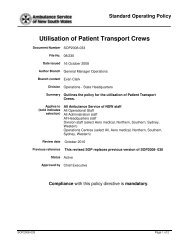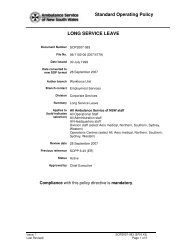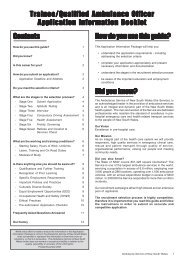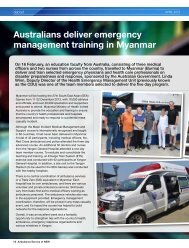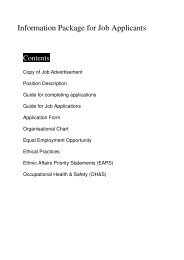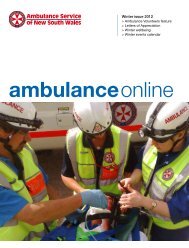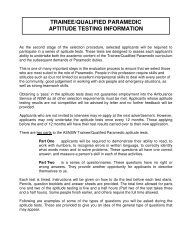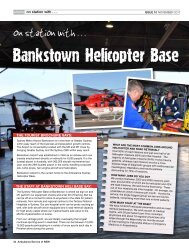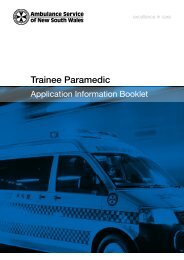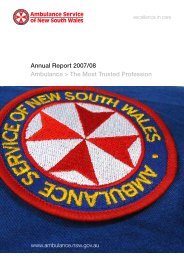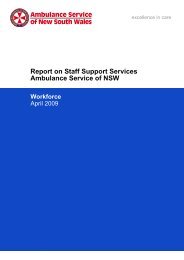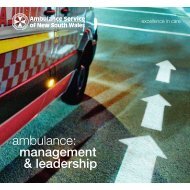atsb final report released 16 may 2013 - Ambulance Service of NSW
atsb final report released 16 may 2013 - Ambulance Service of NSW
atsb final report released 16 may 2013 - Ambulance Service of NSW
Create successful ePaper yourself
Turn your PDF publications into a flip-book with our unique Google optimized e-Paper software.
Risk assessmentThe helicopter operator advised that the procedures in the operations manual weredeveloped following an assessment <strong>of</strong> the risks involved in winching and the extentto which compliance with the operator’s procedures would mitigate those risks. Theoperator advised that in that context, a specific risk assessment was not requiredprior to commencing winching operations.The operator stated that there was an expectation that its crews would consider thepotential environmental risks both prior to, and during the conduct <strong>of</strong> a mission.This included the weather conditions and available ambient light. In addition, theoperator advised that, while the pilot in command had overall responsibility for thesafety <strong>of</strong> the aircraft, all members <strong>of</strong> the crew were expected to participate in theconsideration <strong>of</strong> the potential risks to a mission. The mission was only to proceed ifall crew members were satisfied that it was safe to do so.Checking and trainingThe operations manual specified winching-related recency requirements for pilots,air crewmen (ACM) and rescue crewmen (RCM) who were engaged in emergencymedical service roles and the operator’s pilots and ACM complied with thoserequirements. This included the conduct <strong>of</strong> one winch by day and night every90 days.The paramedics, in their role as ambulance rescue crewman (ARC), were requiredto comply with the operator’s day and night winching recency requirements asspecified for RCM. The operations manual allowed night recency to be varied aspart <strong>of</strong> individual contracts. The AS<strong>NSW</strong>’s contract with the operator included apersonnel and stretcher winch at 6-monthly intervals. The requirement for a nightwinch within those minimum standards was not stipulated in the contract.The lack <strong>of</strong> a night winching currency requirement in the contract was interpretedby the operator as a variation to the RCM currency requirements in the operationsmanual and that therefore there was no night winching currency requirement forAS<strong>NSW</strong> personnel. The AS<strong>NSW</strong> <strong>report</strong>ed being unaware <strong>of</strong> the night winchingcurrency requirements in the operations manual.The operations manual detailed a number <strong>of</strong> requirements in relation to thewinching area that could be used for the conduct <strong>of</strong> winch training. The areas weredefined with reference to CAO 29.11 and differed for the conduct <strong>of</strong> basic andadvanced winch training. Basic winch training was required to be conducted to anarea that was largely free <strong>of</strong> obstacles, whereas advanced winch training could beconducted to more confined areas.In addition to the requirements relating to the area used for winching, the operationsmanual contained a recommendation that, during personnel winching (livewinching) for training purposes:Persons carried on the winch shall be kept at a height above the surface wherein the event <strong>of</strong> separation from the cable the likelihood <strong>of</strong> injury is reduced.The recommended height above the surface for over land operations shall beno more than 15 ft [4.6 m].The operations manual also permitted advanced live winch training, in accordancewith CAO 29.11, to a maximum height <strong>of</strong> 50 ft (15.2 m). Prior to the conduct <strong>of</strong>- 31 -



